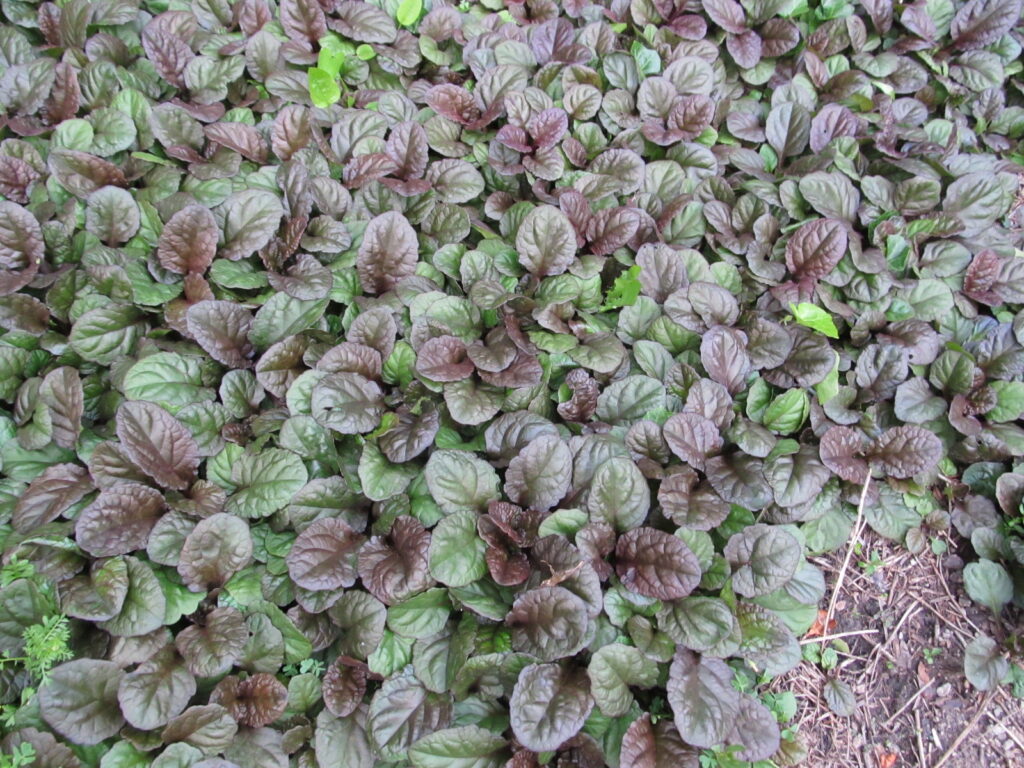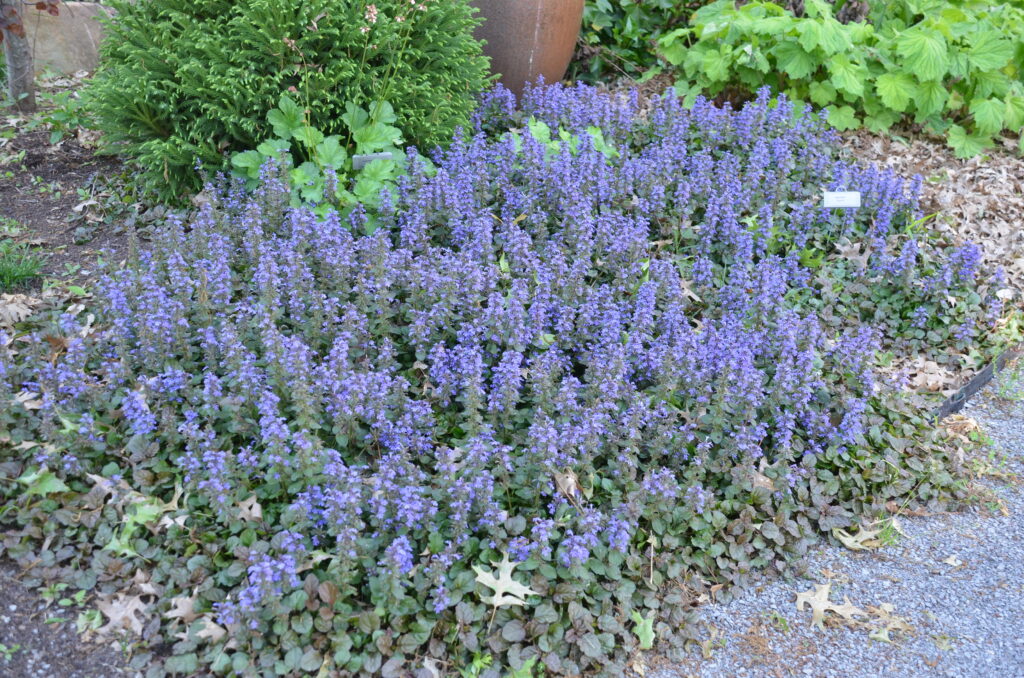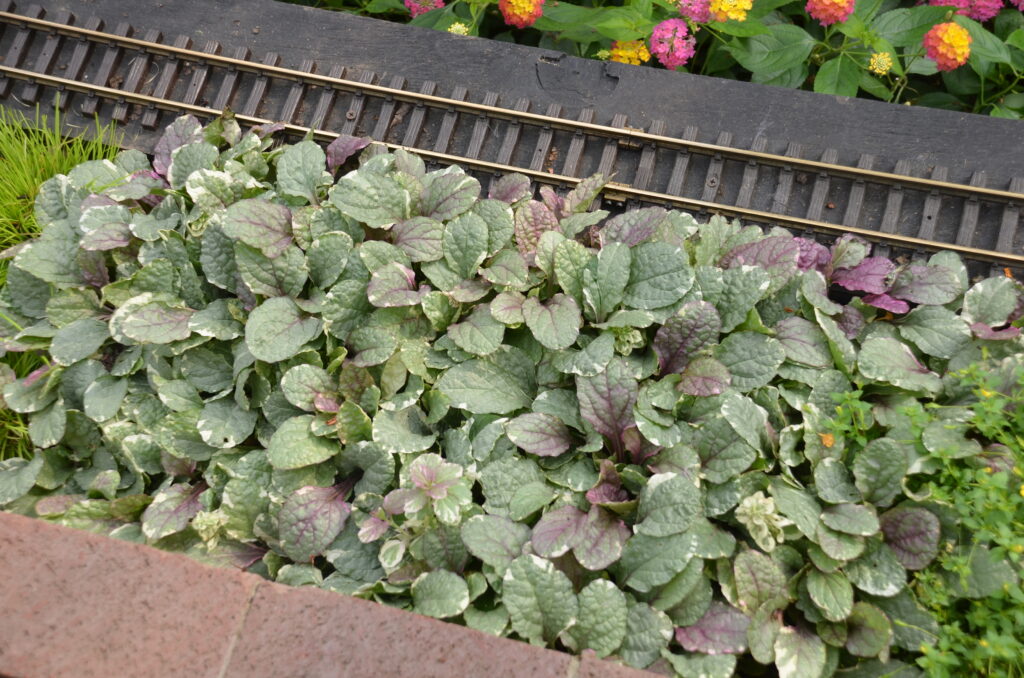
Bugleweed (Ajuga reptans), aka “carpetweed” and “carpet bugle”, is a fast-growing evergreen perennial ground cover in the Lamiaceae (mint) family. The species name “reptans” means creeping. It is native to Europe, northern Africa, and southwestern Asia. Cultivars are hardy in USDA hardiness zones 3-9 (unless otherwise noted).
Most bugleweed cultivars demonstrate aggressive plant vigor that helps to control erosion on a bank or hill or to simply add color to shady spots. It performs well planted underneath shrubs and trees. Their leaf color and stay attractive almost all year-round, and they flower from spring into early summer.
Depending on the cultivar, bugleweed produces glossy, dark green scalloped leaves and clusters of blue, purple, or white flowers that may reach 6-10 inches in height. Several cultivars strut variegated foliage colors and patterns. Floral spikes generally stand above the foliage although some cultivars are shorter.

Early spring flower spikes attract bumblebees, hummingbirds and songbirds. Generally, rabbits and deer do not trouble bugleweed.
Plants form dense mats of glossy foliage in sun to partially shady areas, although the foliage color of some cultivars is most vibrant in full sun. Bugleweed grows best in moist well-drained soils; it struggles in heavy clays and periods of drought exceeding two weeks, particularly in its establishment year.
Bugleweed spreads aggressively via stolons and often creeps into nearby lawn and garden areas. Plant bugleweed in mid-spring thru summer, spacing plants 8-15 inches apart. Every 3-5 years divide plants when they grow too crowded in the spring or fall to prevent overcrowding.
Crown rot can be a problem in very humid conditions and in heavy clay soils. Space plants for good air circulation and avoid overfertilizing. Ajuga is listed as invasive in some U.S. states because it may spread aggressively.
Bugleweed doesn’t require pruning but clip off spent flowers for a neat appearance; for rapid cleanup, raise the cutting height of your mower and make a quick pass.
Great Ajugas to Grow:

‘Catlin’s Giant’ – 8 to 10-inch spikes of deep blue flowers are held atop bronze-blue foliage. The plants grow 3 to 6 inches high and 12-24 inches spread.
‘Blueberry Muffin’ – vigorous, fast-spreading (6 inches tall/ 18 inches spread), deep blue flowers. (zones 5-9).
‘Black Scallop’ –blue flowers and purple-black leaves with scalloped edges.
‘Toffee Chip’ –spring leaves start out light brown, later turn grayish-green with creamy gold margins (zones 3-10).
‘Chocolate Chip’ – dwarf variety with chocolate-burgundy leaves and bluish-purple flowers.
‘Burgundy Glow’ – exceptionally hardy cultivar, 6 to 10 inches high, with blue flowers and tricolored foliage in shades of pink, cream and white.
‘Purple Brocade’ – hardy non-aggressive variety, 6-8 inches high, with bluish-violet 6-inch flowers and deep green leaves with purple markings

 Posted in
Posted in 
